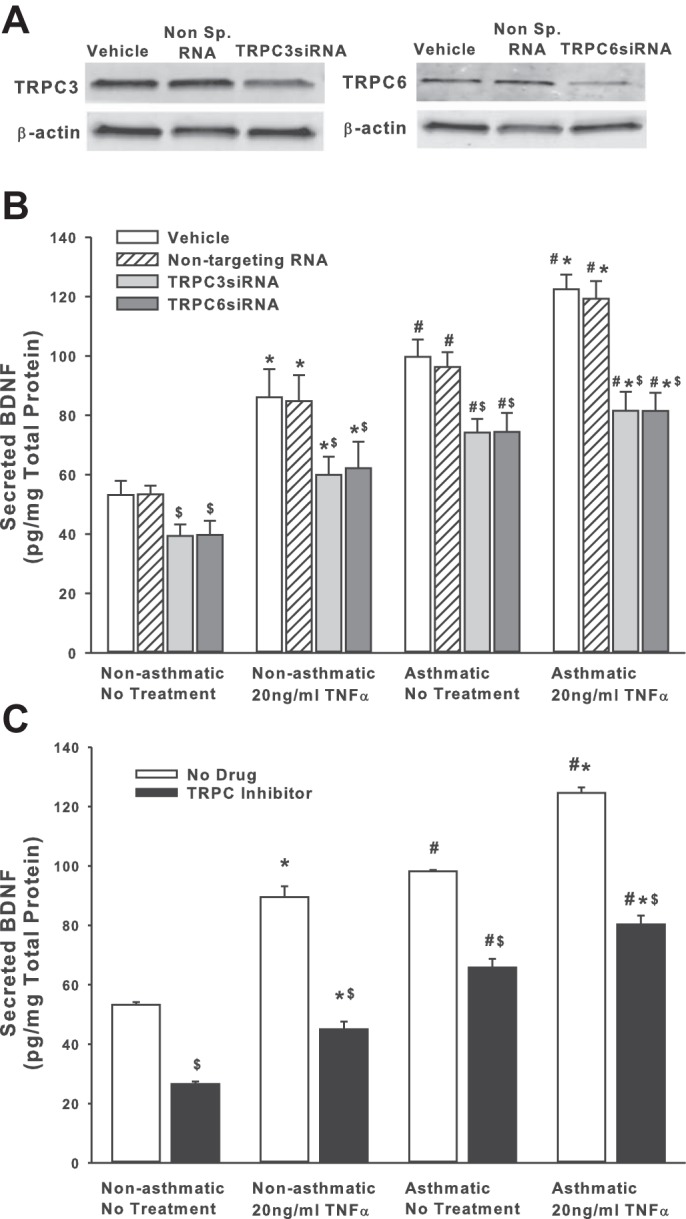Fig. 2.

Transient receptor potential TRPC3 and TRPC channels are involved in regulating BDNF secretion by ASM cells. Nonasthmatic and asthmatic ASM cells were transfected with siRNA against TRPC3 or TRPC6 and were either exposed to medium or to 20 ng/ml TNF-α for 48 h, before cell supernatants and lysates were collected. A: immunoblot on the lysates showing inhibition efficiency of TRPC3 and TRPC6 siRNAs. These siRNAs specifically reduce the expression of their target proteins. Expression of TRPC3 and TRPC6 is not affected in “Vehicle” control and the “Nontargeting RNA” systems. β-actin was used as a loading control. B: BDNF was quantified in the extracellular medium by ELISA. Inhibition of either TRPC3 or TRPC6 resulted in decreased BDNF in the supernatant. Exposure to TNF-α did not elevate BDNF levels much higher. A similar effect was observed in asthmatic ASM cells as well. Vehicle refers to “No Transfection” control, where the transfection reagent Lipofectamine, with no DNA or RNA, was added to the cells. A nonspecific RNA that did not target any gene was used to control for siRNA specificity; n = 4 patients. *Significant difference from Vehicle-No TNF-α control, P < 0.05. #Significant difference between nonasthmatic and asthmatic cells, P < 0.05. $Significant difference between Vehicle and siRNA-transfected systems, P < 0.05. C: ASM cells were treated with 50 μM SKF-96365 (a TRPC inhibitor) for 2 h before being exposed to 20 ng/ml TNF-α for 48 h, before cell supernatants and lysates were collected; n = 4 patients. *Significant difference from No Drug-No TNF-α control, P < 0.05. #Significant difference between nonasthmatic and asthmatic cells, P < 0.05. $Significant difference between No Drug and TRPC Inhibitor-treated systems, P < 0.05.
